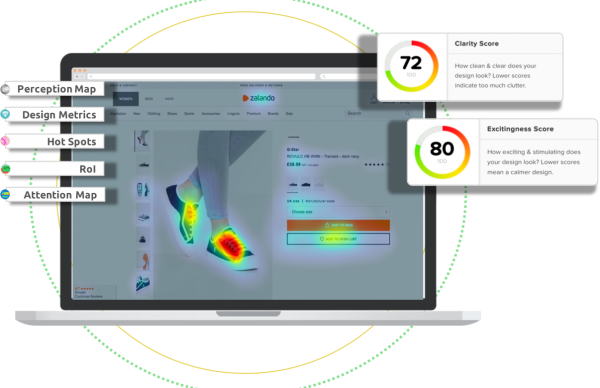We value your privacy
This website uses cookies to ensure you get the best experience on our website.
 Skip to main content
Skip to main content
This website uses cookies to ensure you get the best experience on our website.
From maintaining audit trails to preparing your “toolkit”, the key strategies to successfully manage senior stakeholders in any design project…
Product design should be easy.
At its core, it’s built around identifying user needs, studying user behaviour, research, prototyping, testing and iteration. Everything is based on evidence, and each next step is informed by the last.
Easy, right? Sure…
Unfortunately, as all designers know, at some point in the process, there will be a “little” stumbling block that throws this perfect system into disarray – the HiPPO.
A HiPPO stands for the “Highest Paid Person’s Opinion” but is also used to describe a senior person who has a major influence on the outcome of any creative work. They typically have strong opinions based on years of experience but which tend to lack real data to validate them.
Often, these opinions will contradict the evidence that designers have gathered to guide their choices.
Almost always, these opinions are subjective, based on personal experience or anecdotal feedback from one person, or a small group who do not accurately represent an entire user base.
So how do we stop HiPPOs from derailing our design work with personal, biased and unsubstantiated decisions?

One way of eliminating the HIPPO effect from the design process would be to simply pay everyone the same. Or we could create a level playing field with regard to decision making and sign off. Better yet, we could let designers get on with their job, give them the power to test and learn and trust that they will do the very best they can!
However…
In the real world, we’ll never be able to avoid the fact that the design process involves many stakeholders, many of whom may be higher-paid and carry more weight than the design team (even a design team with a wealth of data behind them).
Inevitably, any design project will need buy-in and sign-off from senior stakeholders. It will need to fit in with business objectives (not just user needs), and appease the people who “sign the cheque”.
So how do you make the HiPPO extinct?
Rather than avoid them, the aim should be to create an environment in which these opinions (and their holders) are more informed and provide a constructive addition to the design process – not a top-down command.
While it’s quite fun to portray all decision-makers in this way, and we’ve rather enjoyed the zoological analogies, in truth, the managers and executives that we refer to when discussing HiPPOs aren’t terrible or scary. In fact, they’re usually in the position they’re in because they’re actually very good at what they do – it’s just that what they do isn’t design.
Ideally, we want to create a working environment where HiPPOs don’t dictate our design decisions, and one where senior stakeholders’ opinions actually add value to the process.
Further, we also want to create an environment of trust, where Designers are given outcomes to achieve and left to get on with it!
Here are some tips for how this can be achieved:
A common mistake made by design teams is that they only engage with decision makers too far into the design process – perhaps at the prototyping stage. By this point, a lot of resources have gone into discovery, ideation and prototyping. And even if all of this work is motivated by user needs and user behaviour, it may not align with the business objectives (or someone’s personal taste).
Becoming involved earlier in the project gives senior stakeholders an opportunity to interject at a time when it is easier, and cheaper, to incorporate their feedback. It also gives designers an opportunity to understand the expectations placed on them, and to ask any clarifying questions. Some HiPPOs may just be trying to put their mark on some work and so feel the need to dictate if brought in too late. Involve them early and this goes away.

A simple framework for demonstrating where the design began, and how it evolved, is to use the three Ws: What, Why and Where. For this to work, it’s important that you maintain a comprehensive audit trail showing the data, insights and decisions that shaped the design.
This can help to articulate your design goals, manage people’s expectations, and earn managers’s trust and buy-in.
We don’t think that designers should preempt an executive’s opinion and make design decisions that will appease them, but there is some merit in considering their perspective. After all, their opinion does matter.
While we should still always base our design decisions on research and data, we should consider our managers’ perspective to help us prepare for our demonstrations.
Think about what questions they might ask, or how the design choices specifically align with business goals.
This is key to getting people to “trust the process” – whether they’re senior stakeholders, collaborators or end users. Saying something is evidence-based is one thing, but showing them the evidence is another, much more convincing thing altogether.
These days, we have so many incredible tools at our disposal that just can’t be matched with a single person’s experience or acumen, no matter how senior a position they hold.
Demonstrating, for example, how user data is collected, how broad the pool of research is, and how scientifically accurate the findings are, makes it increasingly difficult to form a counter argument based on mere personal opinion.
After showing off your tools, it’s important to describe how you intend to use them or how you have used them before. Take an objective (either a business goal or a user need), and explain how you will use the data from a particular tool to inform the decisions that will help you meet that objective.
As mentioned above, the earlier we do this, the less likely it is that there are substantial objections or misalignments of direction later in the process, when it is far more difficult and costly to make changes.
It’s also hugely beneficial to show how these tools, and the data from them, have been used to improve a product in the past.
“Using this tool, we found that users preferred x, so we designed y, and the result was z.”
This tip, and those discussed above, should help us to…
In theory, following the steps above should become easier with each project. As we build trust, earn respect, and ship successful products, the task of managing HiPPOs should become less and less necessary.
Instead, the goal is to get to a point where the highest paid person in the room can still provide their input, but they would know that opinion – even theirs – does not trump data.
In this environment, we can really tap into our executives’ knowledge and experience, because, let’s face it, they have a lot of it to share. But we can do so in a constructive environment, safe in the knowledge that the HiPPO won’t derail decision-driven design.



Check out our latest top tips on how you can use EyeQuant to spy on your competitors, analyse mobile...
Read more
In our latest blog we explore how to use neuroscience to help create higher performing digital products.
Read more
Figma is the go-to prototyping platform for many UX and web designers – and not without reason. Its functionality,...
Read more